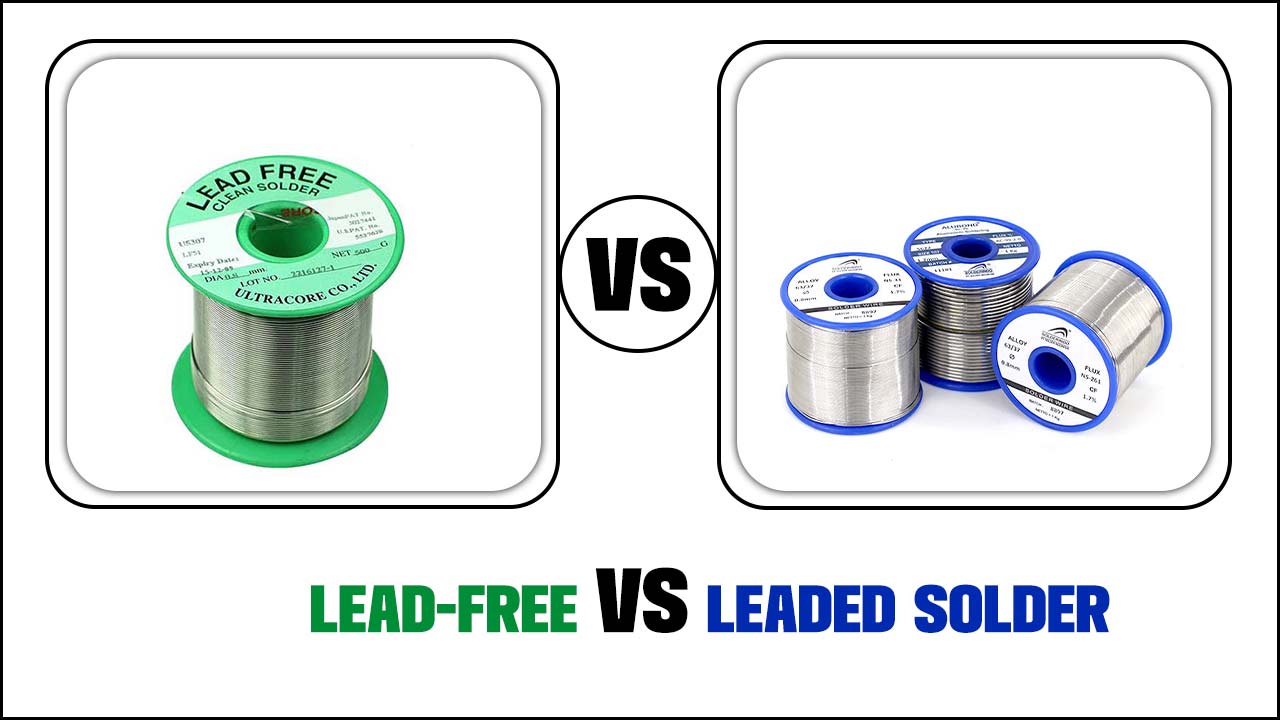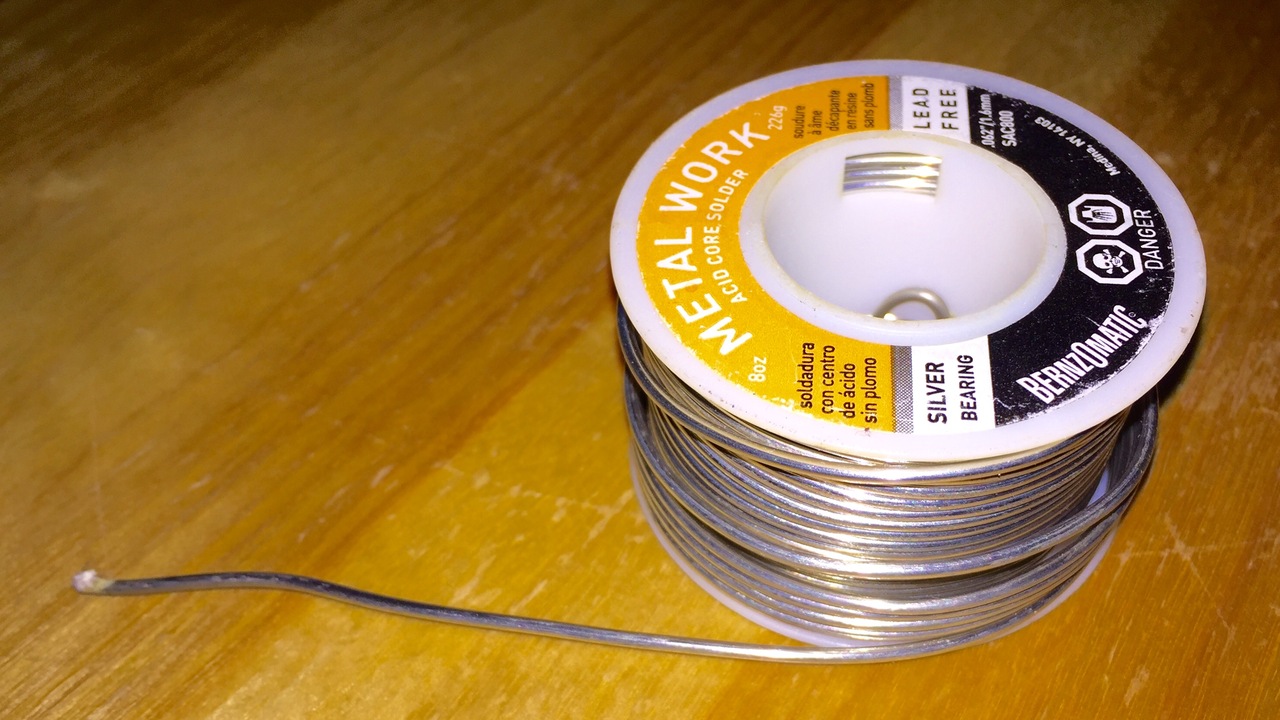The use of lead-free solder and leaded solder in electronics has been a hotly debated topic in recent years. Lead-free solder has been gaining traction due to environmental concerns, while leaded solder is still the preferred choice for many due to its superior electrical properties.
In this article, we will discuss the differences between lead-free solder and leaded solder, and the advantages and disadvantages of each. We will also explore the impact of lead-free solder on the environment and the electronics industry as a whole.
By the end of this article, you will have a better understanding of the differences between lead-free and leaded solder and the implications of each. So if you’re interested in learning more about the differences between these two types of solder, read on!

Lead-Free Vs. Leaded Solder: A Comparison

When it comes to electronic soldering, lead-free solder and leaded solder are the two main options. Lead-free solder is composed of tin, copper, and other metals and has been the preferred option in recent years due to its environmental benefits. On the other hand, leaded solder is composed of tin and lead and has been the traditional choice due to its lower cost and ease of use.
Each type of solder has its own advantages and disadvantages, so it is important to understand the differences between lead-free solder and leaded solder in order to make the best choice for your project. This article will provide a comprehensive overview of the benefits and drawbacks of lead-free solder and leaded solder.
Overview Of Leadfree Solder

Lead-free solder is an alternative to the traditional leaded solder that has been used in electronics for decades. Lead-free solder is often composed of tin, silver and copper and other alloys, and does not contain lead.
Lead-free solder is becoming increasingly popular due to its non-toxic nature and its ability to better withstand temperature changes. Lead-free solder also has a melting point that is much higher than leaded solder, which means it can be used in more applications.
The higher melting point also means that it is less likely to deform or crack when it is exposed to high temperatures. Lead-free solder does not have the same fluxing properties as leaded solder, but there are fluxes available that can be used with it. Lead-free solder is also more expensive than leaded solder, so it should be used in applications where the cost savings are significant.
Definition
Lead-free solder and leaded solder are both materials used in the soldering process. Lead-free solder is a solder material that does not contain lead, while leaded solder does contain lead. Lead-free solder is typically made from a combination of tin, copper, and other metals, while leaded solder is mostly made from tin and lead. Lead-free solder is increasingly being used in the electronics industry due to its environmentally-friendly properties.
Lead-free solder has a higher melting point than leaded solder, and is also more expensive to use. Lead-free solder is becoming more common in consumer electronics, particularly in Europe, where leaded solder is banned in consumer products. Leaded solder is still widely used in industrial applications, as it is generally less expensive than lead-free solder and can be easier to work with.
Uses
Lead-free and leaded solders have different uses, depending on the application. Lead-free solder is typically used in electronics and plumbing applications, as it is not as toxic as leaded solder. It is also suitable for soldering components to printed circuit boards, such as those found in computers and other electronic devices.
On the other hand, leaded solder is used where higher temperatures are required, or where the metal is exposed to high thermal stress. This includes applications such as soldering radiators, car engine parts, and roof flashings.
Lead-free solder is also more resistant to oxidation, making it an ideal choice for applications where the solder needs to remain durable. Lead-free solder is also preferable when working with sensitive electronic components, as it does not produce toxic fumes when heated.
Advantages
Lead-free solder offers several key advantages over traditional lead-based solder. The most important is that it is much safer to use, as it is free from the danger of lead poisoning. Lead-free solder also has a higher melting point than leaded solder, meaning it can be used in higher-temperature applications. Lead-free solders also tend to be more reliable and have better electrical performance, making them ideal for use in complex electronics.
Additionally, lead-free solder is more environmentally friendly, as it does not contain any hazardous materials. Finally, lead-free solder is becoming increasingly popular due to its lower cost compared to leaded solder.
Disadvantages
Lead-free solder has several major disadvantages when compared with its leadeed counterpart. First, it is much more expensive. Lead-free solder requires more expensive metals like tin, silver, and copper, and these metals are not as easy to come by as lead. Additionally, lead-free solder is more brittle and difficult to work with, making it more difficult for professionals to solder components.
Lead-free solder also requires higher temperatures, which can damage delicate components. Furthermore, the fumes emitted from lead-free solder can be more hazardous to humans than lead fumes, making it necessary to use extra precaution when working with lead-free solder. Finally, lead-free solder is not as durable as leaded solder, meaning it may not last as long in harsh environments.
Overview Of Leaded Solder

Leaded Solder has been the go-to choice for manufacturing and repair jobs that require soldering for many years. It is composed of tin and lead and is the preferred choice of solder due to its reliability and relative ease of use. The downside to this form of solder is that it contains lead, which is hazardous to human health and the environment. Despite this, it is still widely used in the electronics industry.
Leaded solder is created by melting the tin-lead alloy at a temperature of around one thousand degrees Celsius. The molten solder is then poured into a mold, where it cools and solidifies. The solder is then placed onto a circuit board or component, where it is then hand soldered using a soldering iron.
This process is relatively simple and can be done by almost anyone. Leaded solder can be melted and solidified at a much lower temperature than lead-free solder. This makes it easier to use, particularly in applications that require a lot of soldering.
It also has a lower melting point and better electrical properties than lead-free solder, making it a better choice for more demanding applications. Despite its advantages, leaded solder has serious drawbacks. It emits harmful toxins when heated, and it is not biodegradable.
It can also corrode components and circuit boards, and it may not meet the requirements of certain electronics. Therefore, it is important to consider the pros and cons of leaded solder before deciding which form of solder to use.
Definition
Lead-free solder and leaded solder are two types of solders used in electrical and electronic components. Lead-free solder does not contain lead, while leaded solder does. Lead-free solder is primarily composed of tin, copper, and other metals, while leaded solder is composed of tin, lead, and other metals.
The lead in leaded solder makes it easier to work with and provides better electrical conductivity, while the lead-free solder is stronger and more resistant to corrosion. Lead-free solder also typically costs more than leaded solder. It is important to note that the use of leaded solder is subject to environmental regulations because of the health hazards associated with lead contamination.
Uses
Lead-free solder and leaded solder are used for various purposes in the electronics industry. Lead-free solder is primarily used for soldering components onto printed circuit boards, as it is free of hazardous materials and is RoHS (Restriction of Hazardous Substances) compliant.
Lead-free solder also offers better electrical performance than leaded solder, making it ideal for microelectronic applications. Leaded solder on the other hand is often used for wave soldering and is more suitable for large-scale production, as it is less expensive and has a lower melting point than lead-free solder.
It is also more suitable for soldering high temperature components, such as those used in automotive applications. Both types of solder are widely used in the electronics industry, depending on the application and the specific requirements.
Advantages
Lead-free solder and leaded solder both have advantages when it comes to soldering. Lead-free solder is more environmentally friendly than its leaded counterpart, making it a more appealing option for those who are conscious of their environmental impact. Additionally, lead-free solder can withstand higher temperatures, making it a better choice for soldering components that generate more heat.
Lead-free solder also has a higher melting point and longer shelf life than leaded solder. On the other hand, leaded solder is much easier to use and is therefore better suited for those with less experience in soldering. It also costs less and works with a wider variety of metals. Ultimately, both have advantages and disadvantages that should be taken into account before making a decision.
Disadvantages
Lead-free solder has its disadvantages when compared to its leaded counterpart. One of the main drawbacks is that it has a higher melting point than traditional leaded solder. This can cause problems during soldering, as it requires additional heat input and time to achieve the same results.
Additionally, lead-free solder is more expensive than traditional leaded solder, which can add to the cost of production. It also has a greater shrinkage rate, which can cause dimensional changes in certain components and cause problems with the final product. Finally, lead-free solder has a lower electrical and thermal conductivity than leaded solder, which can affect the performance of certain components.
Conclusion
Lead-free solder is becoming increasingly popular due to its environmental and health benefits. It does not contain lead, which is toxic, and produces less hazardous fumes than leaded solder. Lead-free solder also has a higher melting point which makes it more reliable for use in high-temperature applications.
However, it is more expensive than leaded solder and can be harder to use. Leaded solder is still widely used, but its use is being phased out due to its health and environmental risks.
FAQ’s
1.What Are The Primary Differences Between Lead-Free Solder And Leaded Solder?
Ans: Leaded solder is composed of tin and lead, whereas lead-free solder is composed of tin, silver, and copper. Lead-free solder has a higher melting point than leaded solder, so a higher temperature is required to properly solder components.
Lead-free solder is more expensive than leaded solder and is more difficult to work with. Lead-free solder is more environmentally friendly than leaded solder since lead can be toxic.
2.What Are The Advantages And Disadvantages Of Using Lead-Free Solder?
Ans: The main advantage of using lead-free solder is that it does not contain any hazardous materials, so it is better for the environment. The main disadvantage is that it is more difficult to use because it requires higher temperatures to melt than lead-based solder.
The higher temperatures can cause more damage to the components of a circuit. Another disadvantage is that lead-free solder is more expensive and so may not be suitable for all applications.
3.What Are The Environmental Considerations Of Using Lead-Free Solder?
Ans: The environmental considerations of using lead-free solder include the potential for increased toxic waste due to the use of hazardous materials such as silver, tin, and zinc; potential for increased worker exposure to hazardous materials; and potential for increased water, air, and soil contamination.
Lead-free solders can also increase the cost of production due to the higher cost of the materials. Additionally, the increased melting point of lead-free solder can cause increased strain on machinery and require additional time and energy to complete soldering.
4.Are There Any Potential Health Risks Associated With Using Leaded Solder?
Ans: Yes, there are potential health risks associated with using leaded solder. Exposure to lead fumes when soldering can be dangerous, particularly for pregnant women and young children. Inhaling lead fumes can cause lead poisoning, which can lead to a variety of health problems, such as headaches, nausea, memory problems, and even organ damage.
Prolonged exposure to the fumes can even be fatal. It is therefore important to take precautions when using leaded solder, such as ensuring proper ventilation and using protective gear.
5.What Is The Melting Point Of Lead-Free Solder Compared To Leaded Solder?
Ans: The melting point of lead-free solder is typically around 400°F, while the melting point of leaded solder is around 370°F. Lead-free solder typically contains tin, copper, and other metals, while leaded solder typically contains lead, tin, and other metals. Lead-free solder has a higher melting point than leaded solder due to the higher tin content, which increases the melting point.





